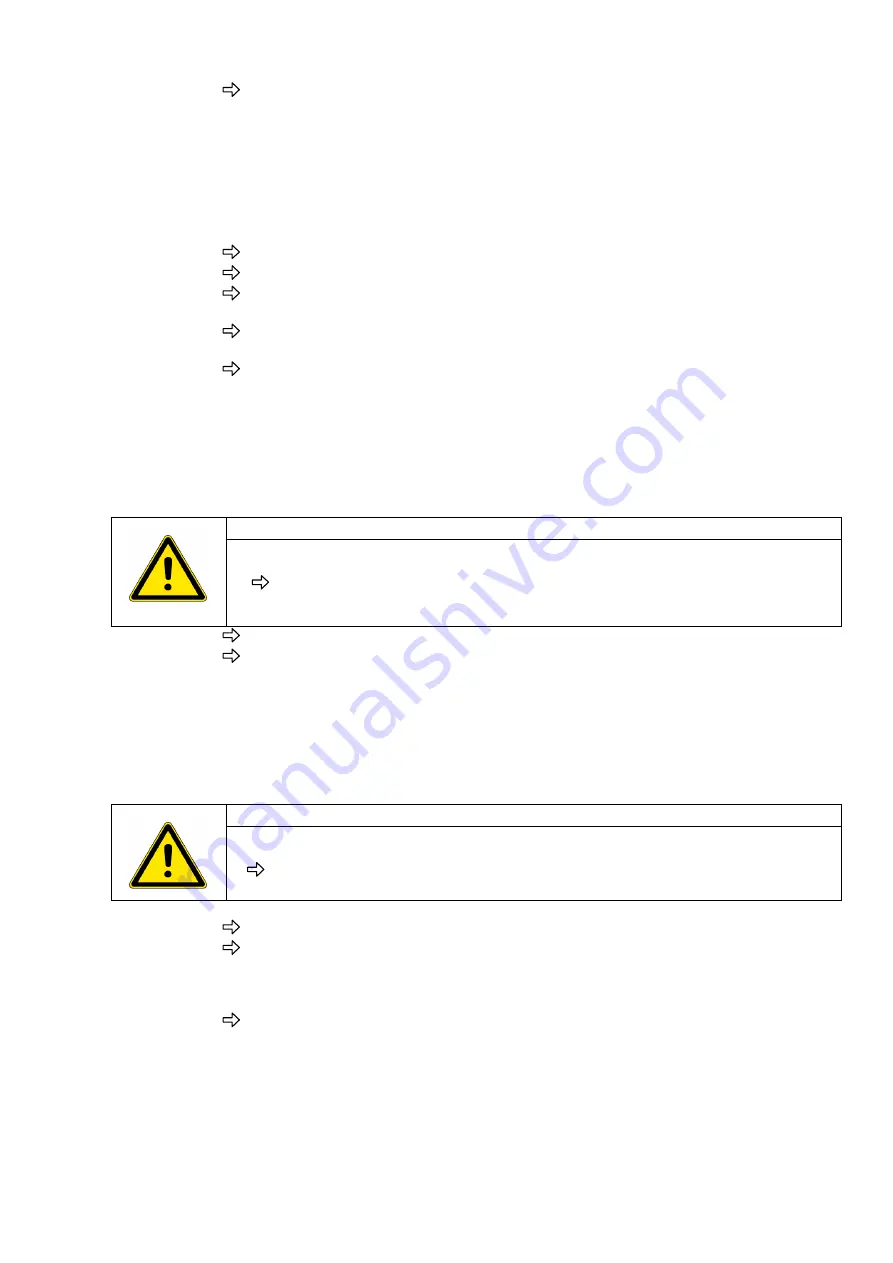
70
Revision 04 * INSTALLATION AND OPERATING INSTRUCTIONS 8BT2 * 881-4027.9
Earth the test sockets of the capacitive voltage detecting systems.
Now the test can be carried out.
5.3. Putting into service
Preparations before
The operating personnel must have been trained, the installation work checked and test
switching on
operation must have been carried out successfully without malfunctions.
Close all front doors of the panels.
Open all circuit breakers (see Page76, clause 6.9, "Opening the circuit-breaker").
Rack all trucks to TEST position (see Page71, clause 6.6, “Racking the switching device
truck to TEST position").
If there is a feeder without connected cables, earth this feeder (see Page78, clause 6.10,
“Closing the feeder earthing switch").
Ensure that all consumers connected to all outgoing feeders are switched off.
Now, you can apply on the operational high voltage to put the switchgear into operation.
Applying voltage to the busbar
DANGER!
High voltage! Danger!
Switch on the operational high voltage only if you have checked the installation
work and performed the test operation without malfunctions.
Connect the incoming feeder in the associated opposite substation.
Connect the incoming feeder to the busbar (rack the removable part to SERVICE
position and close the circuit breaker) (see Page74, clause 6.8, “Racking the circuit
breaker to the service position” and see Page76, clause 6.9, “Closing the circuit
breaker”).
Now, the busbar of the switchgear is live.
Switching on more incoming feeders
ATTENTION!
Short-circuit on the busbar if the incoming feeders have different phase sequences.
Ensure that all incoming feeders have the same phase sequence.
Verify phase coincidence between the respective incoming feeder and the busbar.
Switch on tested incoming feeder.
Switching on
When all the incoming feeders have been connected:
outgoing consumer
feeders
One after the other, switch on all outgoing feeders with connected consumers.
Now, all feeders are energized; the switchgear is totally in operation.










































